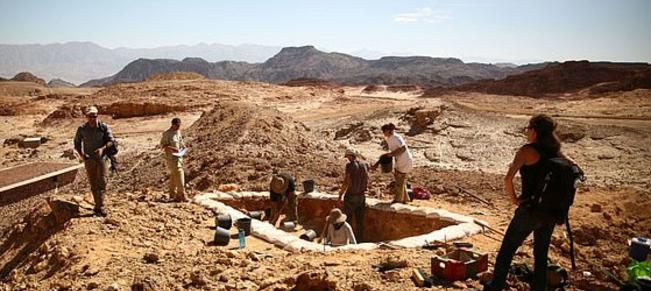 Over the summer a number of archaeological discoveries have made mainstream headlines as they cast light on the biblical record. At the end of September this included the claim that the lost civilization of Edom had been discovered.
Over the summer a number of archaeological discoveries have made mainstream headlines as they cast light on the biblical record. At the end of September this included the claim that the lost civilization of Edom had been discovered.
From The Daily Mail to Popular Mechanics, an array of publications carried the story. The Times ran the story with the headline ‘Scientists find State of Edom which they thought was a Bible Story’.
It is all very good for popular apologetics, but it is worth pausing for breath to consider the reality behind the headlines.
First, there has always been good evidence for the existence of Edom. Not only is it mentioned over 80 times in the Bible there are ancient references to it from military campaigns of Pharaoh Seti I (c.1215 BC) and Rameses III (c.1155 BC). The name means “Red” and the Bible identifies the region with Esau, the brother of Isaac, who had red hair. In later history it was the location of Petra and then, in New Testament times, it is known by the related Greek name of Idumea. So there is no real reason to doubt the existence of the region of Edom.
The redness of Edom is obvious for anyone who visits the rose-red city of Petra or the wilderness of Wadi Rum, used as location filming for The Martian. The colour of the earth betrays the rich iron deposits of the region. While it was hard to farm, the region did lend itself to metallurgy and the recent news stories really relate to the remarkable antiquity of the metal workings in the region.
The copper mines in the Edom date back to 1300 BC. Archaeologists of the Central Timna Valley Project have published a number of papers which have developed our understanding of the copper manufacturing in the region. Over the last decade they have found evidence that the copper mines of Timna were at the forefront of the pivotal development of civilization from the Late Bronze Age into the Iron Age. The most recent publication has drawn attention to just how early, and how significant, this metallurgy was in Edom. An analysis of slag from the smelting process has demonstrated a rapid technological development during the 11th Century BC. The paper authors call Edom a “copper powerhouse” of the ancient world. What this establishes is that Edom at the time could not have been a loose alliance of tribes but must have been a unified kingdom with all the administrative and trade capabilities to support such development. It is just such a kingdom that the Bible writers describe.
The archaeological record continues to demonstrate that what we read in the Bible matches what we know of the ancient world. It is a little overdramatic to talk of “proving the Bible.” Better to acknowledge that as time passes archaeology confirms that the biblical authors demonstrate genuine knowledge of the ancient world about which they write. The traditional, liberal view that the Bible is a collection of legends based on much later writings simply does not match the material evidence.
This week’s guest post comes to us from for Premier Christianity.
Share This Post

